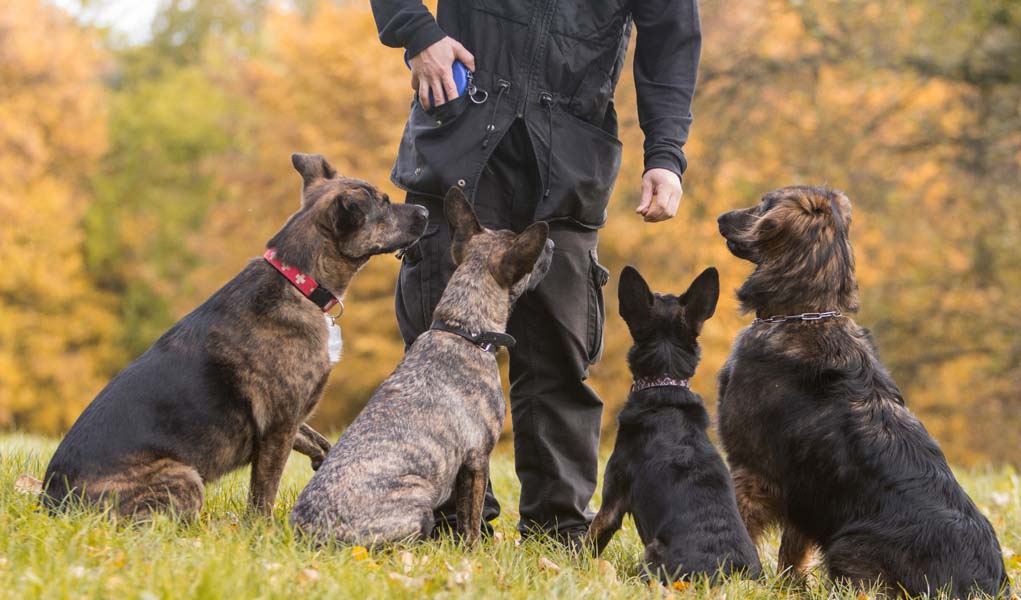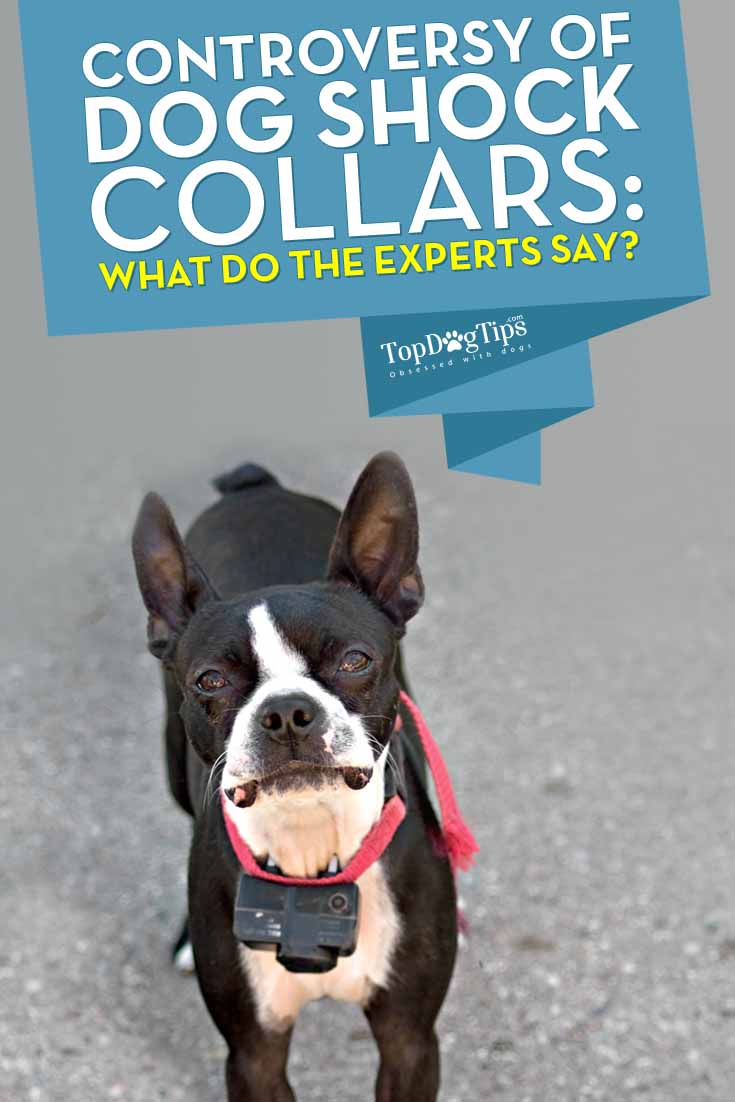
It's no secret that dog shock collars are a controversial option for training a dog. Most people are incredibly divided on whether or not they should be used. Some people love them and swear by them, while other pet parents call them cruel, and refuse to even consider them. So where should you stand on the use of dog shock collars?
It's very clear that like with any other dog training methods and products, there are people out there who don't use electric dog training collars in the manner that they are intended. However, this doesn't mean that everyone who uses an electronic collar on their dog is doing so with complete disregard of their pet's health. I know what you're thinking right now, but hear me out!
Last month, Patrick Lumontod has published an excellent article on training collars for dogs. It included thorough research into the matter and some science behind using these products. As a trainer and aspiring research, he concluded several things in the article:
- There's still a lack of thorough research on the pros and cons of these devices;
- All of the studies showing either benefits or side effects are poorly designed;
- There is a way to use dog collars with total safety and no harm to the dog;
- When a dog is harmed, it's usually due to inadequate use of the collar or poor quality products.
- In conclusion, it's still better to opt for training dogs without the use of shock collars.
With that being said, there's clear evidence that professionals – those being experienced dog trainers – have found an effective way to train dogs using shock collars with absolutely zero harm to the dog. Many have shared their advice for the open-minded dog owners who would listen and outlined exactly how this can be done.
Taken into account that these professional dog trainers started their careers out of love for dogs, and have successfully worked with hundreds of pets, I think the least we can do is listen to what they have to say. As an example, back in December 2015, Top Dog Tips editor in chief Samantha has interviewed on these dog trainers. Here's the full interview.
 Did you know that there's even an official electric training collar organization? That's right – they are based out of Belgium and they oversee and regulate manufacturing and use of electric collars for dogs. It's called Electronic Collar Manufacturers Association™ (or ECMA).
Did you know that there's even an official electric training collar organization? That's right – they are based out of Belgium and they oversee and regulate manufacturing and use of electric collars for dogs. It's called Electronic Collar Manufacturers Association™ (or ECMA).
ECMA ensures that dog trainers are properly trained to use the devices, and that only top quality equipment is being employed. They even teach future dog trainers, and award trainers for proper, safe and effective training of dogs.
Dog trainers do understand the potential dangers of these devices if not used properly, and they do take the use of dog shock collars very seriously.
“Those dog trainers wouldn't use a shock collar on themselves though.”
Actually, they do. Many dog trainers test the collar to know exactly what the dog will be receiving.
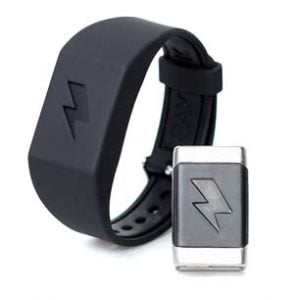 Not only that, but there are even popular “human shock collar” type devices out there. Surprised? Me too. Recently, I accidentally stumbled upon this one – Pavlok – which inspired me to write this post. There are other products just like this where a shock stimuli is used on a person to “train” them for a variety of different reasons.
Not only that, but there are even popular “human shock collar” type devices out there. Surprised? Me too. Recently, I accidentally stumbled upon this one – Pavlok – which inspired me to write this post. There are other products just like this where a shock stimuli is used on a person to “train” them for a variety of different reasons.
Please note that this article is not about encouraging or discouraging you from using dog shock collars with your Fido. If you're not familiar with the device, don't have the appropriate equipment, and haven't taught yourself how to use electronic collars, then I would strongly advise against that.
The purpose of this article is to take an objective look at the arguments for and against using shock collars for dogs based on what experienced has to say about them. Dog owners considering using a dog shock collar to train their pets will benefit from this overview. Using this device is not a decision to take lightly, so buckle up and let's see what's the opinion out there.
RECOMMENDED READ: How To Use Shock Collars In A Humane Fashion
Dog Shock Collars Controversy: What the Experts Are Saying About Using Them?
What is a Shock Collar?
Before we get started, let's take a quick look at what dog shock collars are and how they work for training dogs.
A shock collar for dogs is a special device from a family of training collars with two metal prongs on it. It is placed against your dog's neck area. These electrodes allow the collar to deliver an electric shock to the dog when a certain action occurs.
According to Wikipedia, the device has many different names attached to it: e-collars, Ecollars, remote training collars, Zap collars, or electronic collars.
The user can set the strength of the shock stimuli and can choose when it will go off. Some dog shock collars are manually controlled, while others are set to go off when a dog gets too close to a restricted area (dog containment systems), or when he barks (anti-bark collars).
This type of training with the use of electronic collars is known as “aversive dog training,” meaning your canine will learn to avoid the behavior that shocks him because he doesn't like getting shocked. It also carries components of classical conditioning (or Pavlovian conditioning), which has been used with humans.
Dog shock collars come in a variety of styles, from ones with adjustable strengths to ones that have a warning beep or flash to warn the dog before he actually gets shocked. Some training collars also utilize a spray feature to give the dog something unpleasant before they actually use a physical shock to deter the animal from bad behavior.
This is what a regular dog shock collar looks like:
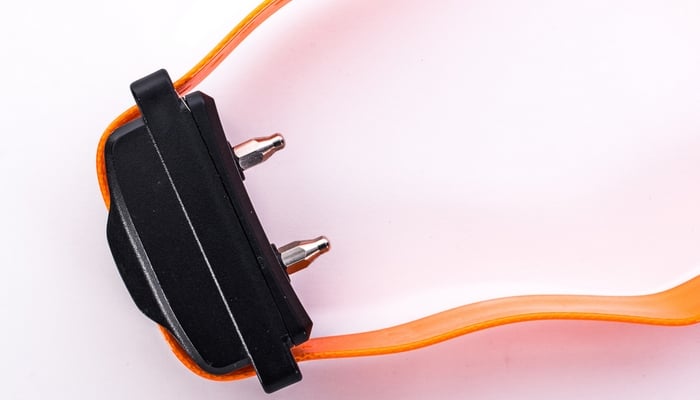 There are dog shock collars that will go off automatically, either for when the dog is barking (anti-bark collars) or roaming out of the yard. These dog training collars are a completely different topic, and majority agrees that they are unsafe and completely unnecessary to use. That's not what we're talking about today.
There are dog shock collars that will go off automatically, either for when the dog is barking (anti-bark collars) or roaming out of the yard. These dog training collars are a completely different topic, and majority agrees that they are unsafe and completely unnecessary to use. That's not what we're talking about today.
DO THIS INSTEAD: How To Stop Dog Barking with Command Training
Dog shock collars we're covering today are those that provide the electric stimuli only upon the choice of the user. These are 100% under the control of the dog trainer or owner, which is a very important distinction to make.
Arguments For the Use of Dog Shock Collars
 Let's take a look at the “pro shock collars” side of the fence first.
Let's take a look at the “pro shock collars” side of the fence first.
People who are in support of using dog shock collars argue that they are safe to use and they are incredibly effective.
The main argument is that these types of dog training collars typically do not produce enough of a shock to cause serious pain to your pet, and with adjustable options, shocks can be (and should be) completely avoidable.
Contrary to popular belief, shock collars are NOT an affordable option for dog training. There are plenty of China-made devices on the market which you can buy for around $30, and those are the ones you should avoid at all costs.
A good quality dog training collar must be extremely precise, safe, extremely reliable and be of good top-notch quality build. There are some electric dog collars you can find for around $200-$300 with very few features, but professional dog trainers will usually use high quality training dog collars that cost around $700-$1000 and made by famous brands such as Garmin.
According to dog trainers, these shock collars deliver the best results for dogs that are extremely difficult to train. There are several reasons why a dog may be hard to train. The most common one is the hyperactivity disorder.
Trainers say that using a shock collar can protect the dog by quickly training him to avoid dangerous behaviors such as escaping the yard, chasing cars, or anything else that may potentially harm the dog as the result of misbehavior.
The point they're trying to make is that not all dogs are trained quickly, or easily, and in that time, there's a potential that one of those scenarios will occur where a dog will end up harming himself.
RELATED: Best Alternatives to Dog Shock Collars
Arguments Against the Use of Shock Collars for Dogs
 There's definitely no shortage of people who are very much against the use of shock collars for dog training. Their reasoning is quite simple (and valid): dog shock collars are cruel and cause your pet pain. Many pet owners would rather use positive reinforcement on their dog instead of a shock collar.
There's definitely no shortage of people who are very much against the use of shock collars for dog training. Their reasoning is quite simple (and valid): dog shock collars are cruel and cause your pet pain. Many pet owners would rather use positive reinforcement on their dog instead of a shock collar.
On top of that, dog owners worry that using a shock collar will cause fear in their pet, which can ultimately lead to more bad behavior. This was actually suggested in one of the studies from the article I liked to above, albeit of a poor design, but it's a good indication that shock collars may in fact negatively affect your dog's behavior due to release of stress hormone called cortisol.
Obviously, if that's the case, then this defeats the purpose of using dog shock collars. Essentially, this makes the device a waste of time and money because it results in more behavioral problems, requirement for more training, additional time and money spent re-training the dog.
But if that's the case, then how do so many trainers successfully train dogs who never end up having those “fears”?
The answer is simple, according to experts: you must train yourself first on how to use the device and know exactly what you're doing, when you should be using it and why you're using it.
Using dog shock collars for training pets is NOT as simple as just shocking the dog for misbehavior, and there's a certain training method applied with the use of these devices.
REVIEW: Spot Collar for Dogs – A No Shock Invisible Fence Solution
What Do the Experts Say about the Use of Shock Collars?
It's time to actually take a look at what dog experts have said over time about the use of these devices.
Please note: we're publishing this article only with the mention of five well-known people who expressed their opinion on the matter, but we hope that more experts will come forward after the publication and provide their input so that we can continue updating this post. If you would like to provide some feedback, please send us an email.
Robert Milner (dog trainer)
Robert Milner, a dog trainer specializing in training scent detection and search and rescue pups, is strongly against the use of shock collars.
Although dog shock collars are often used in the field of professional dog training, Milner believes that dogs can be trained just as well, if not better, using only positive reinforcement methods.
Instead of using dog shock collars or other aversive training methods, Milner relies on clicker training and dog treats to get his dogs to follow instructions. He has found that this dog training method works well, and is faster than using other methods.
If you want to ask Robert Miler a question, you can send him a message on his Facebook page.
To read more about using clicker training to train your Fido, I recommend reading Samantha's interview with Dr. Robert Mugford.
Jonathan J. Cooper (researcher)
Jonathan J. Cooper is a researcher who worded his opinion on the use of shock collars for dogs in a Gizmodo article this way:
This is an extremely nuanced point: there is no question that shock collars have the capability of inducing distress in an animal. However it is not necessarily the case that they induce distress “when used in accordance with best practice by trainers experienced in their use,” writes University of Lincoln researcher Jonathan J. Cooper in the journal PLoS ONE.
In 2014, Cooper conducted a study determining the effectiveness of dog shock collars against other methods of training dogs. The study was done with ECMA-awarded dog trainers and trainers from Association of Pet Dog Trainers (APDT). Three groups of dogs were used: one group receiving shock collar training and the other two being trained with the use of non-aversive training methods.
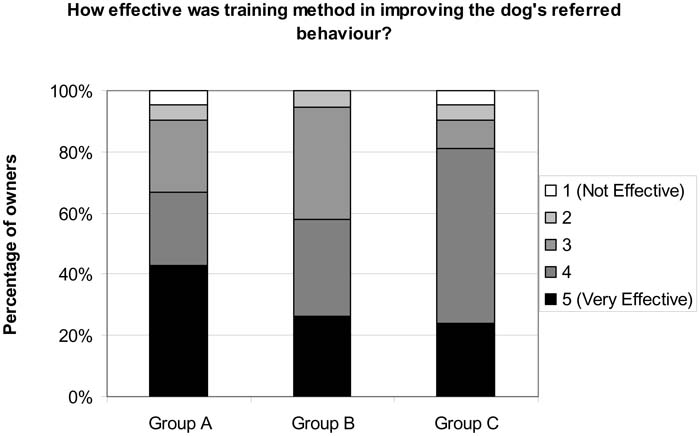
At the end of the study, all the dogs' behavior had significantly improved, showing that shock collars are just as effective as other training methods. Furthermore, the dogs in the shock collar group showed no signs of being more stressed or fearful, leading the researcher to believe that shock collars were a safe option for dogs.
Note: other studies showed the opposite, with dogs' behavior altered after they have been trained with the use of shock collars, so the jury is still out on this one.
Cesar Milan (dog trainer)
Cesar Milan is a well-known celebrity dog trainer who appeared on his own TV show The Dog Whisperer and believes that there is a way to use dog shock collars safely.
Although many people have criticized Milan for his use of shock collars, he says that he never uses a device that would hurt a dog. Milan stated that dog shock collars can be a useful tool for training dogs, especially those who are more feral and aggressive at the start.
In extreme cases, Milan believes these methods can help these untrained dogs find homes. As long as the person using the shock collar is calm and educated, they can be used as an effective tool, especially for dogs who are strong-willed and may not respond to typical dog training methods like clicker training, dog treats and praise.
You can inquire Cesar Millar on his Twitter account.
Jonathan P. Klein (dog trainer)
Jonathan P. Klein is an expert dog trainer who runs the website The Dog Behavior Expert and is strongly against the use of electric collars for dogs.
Klein believes that any training issue is solvable without the use of these aversive dog training methods. He says that the main focus of training should instead be consistency.
Klein also said that dog shock collars do not treat the underlying issue of bad behavior, and that the cause of this bad behavior must be discovered first, before a dog can properly be trained. Praise and treating is a better way to discover this underlying issue and works more effectively at reinforcing the correct behavior.
Makes sense, right? You can reach out to Jonathan on his Facebook page or Twitter.
James Hamm (dog trainer)
James Hamm is a veterinarian-endorsed experienced dog trainer who also runs his own website Lonestar Dog Trainer. He is for the use of safe and high quality shock collars for training dogs.
Samantha has previously interviewed James where he provided a very extensive overview of the use of electric collars for dogs, how those can be used safely and why they must be used in certain cases or with very specific dogs.
Hamm has successfully trained hundreds of dogs, both his own and his clients, with the use of dog shock collars. He makes it a point that there is never any punishing of canines with his training methods.
“A good dog trainer never needs to punish dogs, because they have taught the dog what to do, taught the dog how to do it, held the dog accountable, and, if necessary, corrected it when it made the wrong decision. Punishment is never involved.”
You can ask James Hamm a question on his Facebook page or Twitter.
If you're an expert in the field and would like to provide your opinion on the use of dog shock collars, an argument for or against, please send us an email or leave your comment below this article.
Take Home Message
 As you can see, even canine experts in the field of dog training are divided on the use of shock collars, and both sides bring up some good points.
As you can see, even canine experts in the field of dog training are divided on the use of shock collars, and both sides bring up some good points.
At the moment, if we take an objective look, it's difficult to say which side knows better so there's no right or wrong answer here. As a dog owner, you need to evaluate your own pet and decide if using a dog shock collar is right for his specific case.
Bottom line: since some studies do show potential negative consequences on dogs, shock collars should be used as a last resort. If a dog can easily be trained using command, clicker or other training methods, there's no reason to start with a training collar.
Several things are clear:
- Using dog shock collars should not be the very first method of training;
- These devices are not suitable for all dogs;
- Only high quality, precise and reliable training collars must be employed;
- You must teach yourself first, know exactly what you're doing when training dogs with the use of shock collars and there should never be any punishment involved.
Take everything we've outlined above before considering using dog shock collars with your dog. Make sure you get second, third and fourth opinion on this, and maybe do even more research on the matter, specifically on the case applicable to your own Fido. Finally, consider using a professional's service who has experience training dogs with these devices rather than doing this yourself.
READ NEXT: Science-based Guide to Dog Shock Collars – What You Must Know


